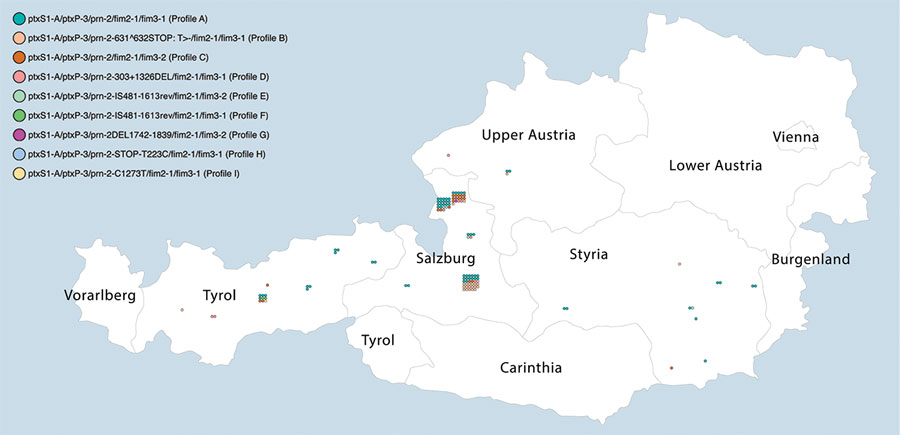Volume 27, Number 3—March 2021
Research
Isolate-Based Surveillance of Bordetella pertussis, Austria, 2018–2020
Figure 2

Figure 2. Pertussis cases by district of residence of case-patient and genetic profile of the corresponding Bordetella pertussis isolate identified in a B. pertussis isolate–based surveillance study, Austria, May 2018–May 2020. Each dot represents 1 case. Cases grouping next to each other belong to the same district. To protect patient confidentiality, only states and not districts are labeled.
Page created: January 12, 2021
Page updated: February 21, 2021
Page reviewed: February 21, 2021
The conclusions, findings, and opinions expressed by authors contributing to this journal do not necessarily reflect the official position of the U.S. Department of Health and Human Services, the Public Health Service, the Centers for Disease Control and Prevention, or the authors' affiliated institutions. Use of trade names is for identification only and does not imply endorsement by any of the groups named above.